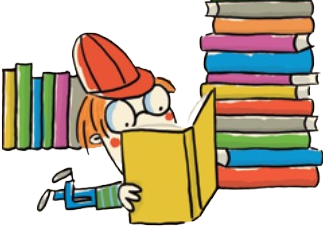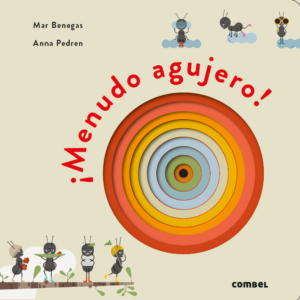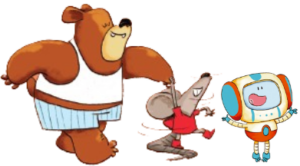
Nurturing a love of reading in kids
While we are preparing the Bologna Book Fair and the new Spring catalogue is on print, we want to share with you the letter from the Editorial Director:
Building the library from the nest
If we want to nurture a love of reading, it is important that children, from a very young age, have books to touch and choose from.
Building a first library of literature at home is a fundamental practice to awaken and encourage the habit of reading: an experience that undoubtedly brings with it a great emotional and emotional charge. In this daily habit, books will spread our children’s enthusiasm for discovery, help them acquire basic intellectual skills and introduce them to a world of knowledge and fun. Thus is born a bond of love for reading that can last a lifetime.
As in a construction set, this first library should include a variety of elements, where each book has its own value and, at the same time, is a piece that relates to and fits in with the others.
Toddlers can have fun with a wide range of cloth books, bath books and board books with flaps, tabs, textures and mechanisms to play peekaboo. “The Seasons” series, the forthcoming Touch & Feel: Animals or Wow! What a Hole! by Mar Benegas and the latest adventures of Minino by Martí-Salomó are good examples.
Activity books are another important part of a pre-school library bookshelf. Kids can boost their potential in a fun way, challenging their imagination, while also fostering critical skills like problem solving, fine motor skills, and language proficiency. “Creativity at Stake!” by Àngels Navarro, illustrated by Susie Hammer meets all the requirements.
To add an even more playful dimension to reading, pop-ups are essential in the Combel library. In them, the paper engineering interacts with the image and the text to form a book-object built like a sculpture. Kids will be able to travel to the North Pole with the reporters Pipa & Otto, the series created by Patricia Geis.
One of the pieces that cannot be missing in our library is the imagier, an ideal tool for structuring and consolidating the lexicon and refining reading comprehension. Although the most classic ones are those designed to learn the first words, this typology can cover different age groups. As an example, “I Spy With My Little Eye…” series by Cristina Losantos, created for kids from 3 years onwards, not only fulfills that role but also adds a new dimension with the search & find game and a large dose of humor.

Another virtue of reading is that it helps us to understand the world around us. Fairy tales are a key element for young listeners and readers, as they are part of a cultural legacy that stands the test of time. The stories are full of fantastic characters, mysterious places and unusual situations, which awaken fantasy, stimulate creativity and activate the ability to imagine different worlds.The “Vintage Classics” series, with texts by Bel Olid and illustrations by Mercè Canals, has a good place on this shelf.
An indispensable pillar in our library is the picture book genre, which naturally provides us with the opportunity to read aloud and to share magical moments of emotional exchange. They are books full of details, which immerse us in the careful observation of the images and recreate the beauty, the sense of humour and the poetics of the text. In our list you can find several of them, but the cornerstone of this section would be You and I by Elisenda Roca and Guridi –the bestseller, which has already become a Combel classic.
When our little ones start to fly, they need longer and more complex stories to read on their own. That is the purpose of the early chapter books. Martí-Salomó are now working on the first titles of “Ticniks” and the “Daniel Detective” trilogy by Marta Jarque to be published in September, will shelter these early readers.
 The corridor that leads directly to the enjoyment of autonomous reading leads the youngest to somewhere between classic narrative and graphic novels, with characters of greater depth and adventure and mystery plots in a context of extraordinary everyday life. Our bestselling series “Bitmax & Co” and “Agus & Monsters,” by Jaume Copons and Liliana Fortuny, and “Mía Fantasía”, by Elisenda Roca and Betowers, would happily fill this spot.
The corridor that leads directly to the enjoyment of autonomous reading leads the youngest to somewhere between classic narrative and graphic novels, with characters of greater depth and adventure and mystery plots in a context of extraordinary everyday life. Our bestselling series “Bitmax & Co” and “Agus & Monsters,” by Jaume Copons and Liliana Fortuny, and “Mía Fantasía”, by Elisenda Roca and Betowers, would happily fill this spot.
We also need non-fiction books in our library that, in an entertaining way, open the doors to thematic knowledge, especially attractive to some of our young readers.
Following Inside the Museum Mazes, we are launching a magnificent lift-the-flap book: Hands on Work! by Luisa Vera — a playful journey through the history of architecture, within reach of the first curious.
 Meanwhile Cristina Junyent and Cristina Losantos are mixing the mortar to build Daily Life, Then & Now: a new title to understand where we have come from, where we are, and to get a glimpse of where we are going.
Meanwhile Cristina Junyent and Cristina Losantos are mixing the mortar to build Daily Life, Then & Now: a new title to understand where we have come from, where we are, and to get a glimpse of where we are going.
Speaking of the past, we will go back in time to prehistoric times with Earthlings by Patricia Geis. And to reflect on our future, our EcoSphere imprint will grow with two new titles: Harvest  Time by Marta Vilar and The Leap of the Frog by Teresa Franquesa. Books to learn how to build sustainable habits, to understand how climate change is affecting us and take action on global warming.
Time by Marta Vilar and The Leap of the Frog by Teresa Franquesa. Books to learn how to build sustainable habits, to understand how climate change is affecting us and take action on global warming.
Finally, an indispensable genre in any youth library: comics, stories in which image and text have equal weight and pave the way for reading practice. Besides the Volume 3 of Massagran adventures, Combel is delighted to contribute with a very special monograph: The Marvelous, Unique and Surprising Book of St. George, by Jaume Copons and Liliana Fortuny. An amusing adventure about the legend of Saint George.
That was the end of that! We have created a good library, in which each one of its shelves will allow the children a playful learning process that, just like a toy box, will make them the protagonists of the wonderful world of books.
Noemí Mercadé
Editorial Director









